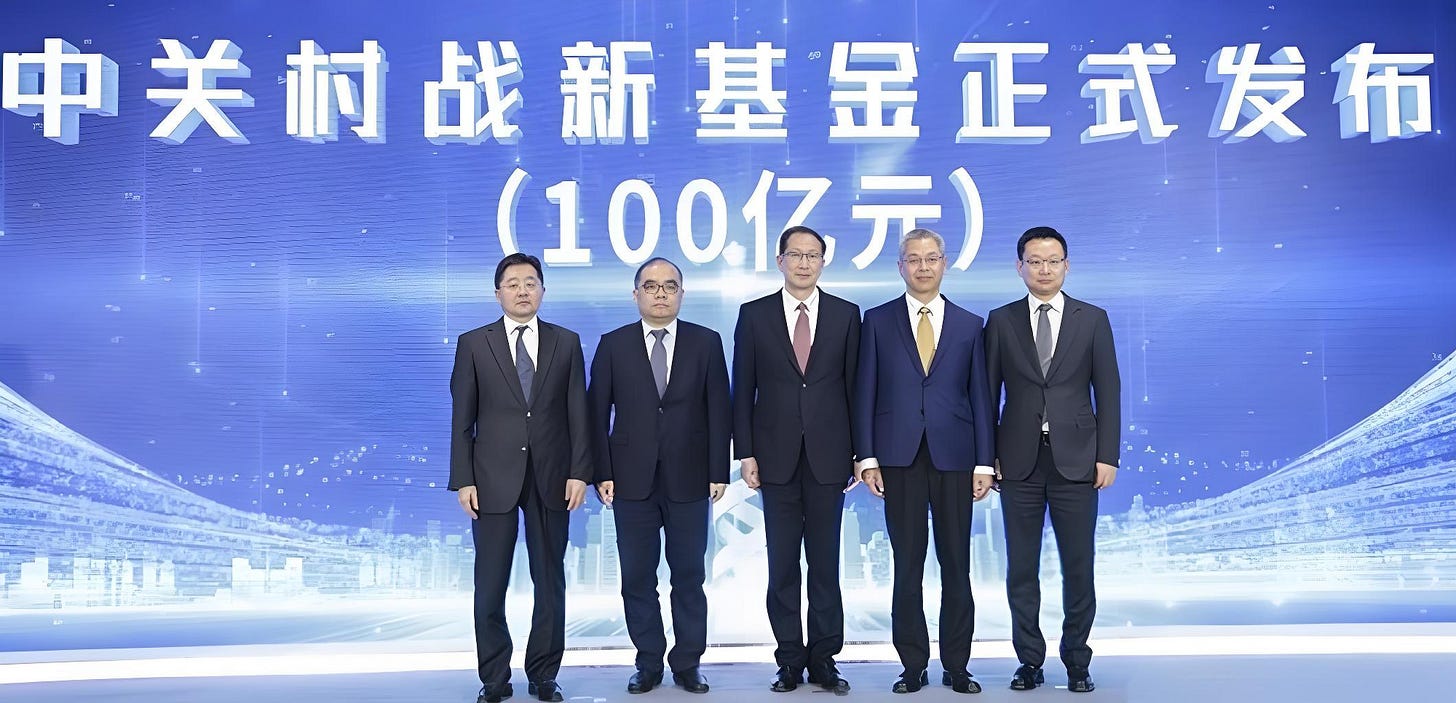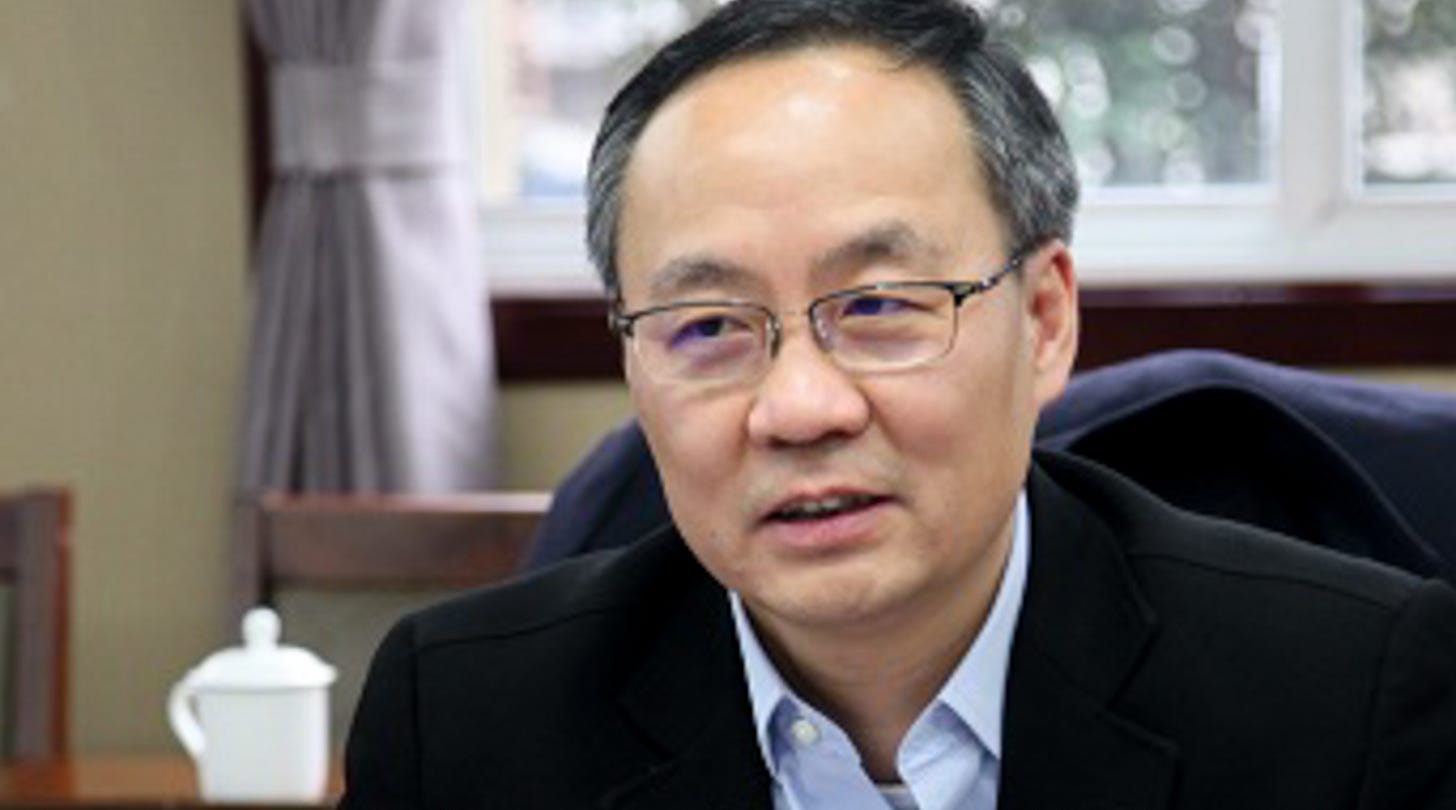calling on the banks
Asset investment companies offer another lever for scitech financing

asset investment companies offer another lever for scitech financing
A new tool in Beijing’s scitech financing kit has emerged. A pilot, allowing financial asset investment companies (AICs) to engage in direct equity investments, was expanded during the Two Sessions 2025. AICs can now set up subsidiaries in 18 provinces and invest 10 percent of their assets there. Insurance funds, ever a target of expanding patient capital, may now invest in AICs, providing a new fundraising channel for their investment operations.
The AIC pilot has made strides since H2 2024. Initial momentum came in June 2024, when measures to develop VC (venture capital) were extended to encourage AICs. Detailed steps would come as part of a September 2024 monetary stimulus package. A National Administration for Financial Regulation ‘Notice’ added 18 cities to the pilot that month, letting qualified commercial banks take part, on par with the usual five large state-owned behemoths. Dropping on 1 April 2025, an enactment plan for banks and insurers to move into scitech financing calls for expanding the pilots to more cities, while urging so-far excluded banks to set up AICs.
The burgeoning equity investment pilot, spreading from a few banks in Shanghai to major PRC hubs, reflects Beijing’s hopes. Handy tools, AICs may realise multiple priorities: deleverage SOEs, channel bank capital into equities, all while pooling more patient capital for scitech self-reliance. Their prominence is assured.
from debt swaps to startups
As a novel mode of state-backed investment, AICs initially specialised in helping overleveraged SOEs manage debt-to-equity swaps, lauded by Premier Li Keqiang 李克强 at the 2016 Boao Forum as keys to financial reform. October 2016 ‘Opinions’ from the State Council would solidify the role of the swaps in shoring up SOEs and shadow banks. ‘Management measures’ issued August 2017 paved the way for the five major state-owned commercial banks to set up AICs that year.
Created as subsidiaries of banks, AICs wrangled their parents’ indebted clients, converting certain liabilities into equities that the company would then manage. The results were positive, reports Caixin: five AICs had stacked a total of C¥587 bn in assets by late 2024. Debt-to-equity swaps accounted for over 60 percent of their income that year, reports China Securities.
AICs have from the outset served the state. Coordination between PBoC (People’s Bank of China) and banks to capitalise them was confirmed in a July 2018 RRR cut that released C¥700 bn of liquidity, of which C¥500 bn was funnelled to AICs. PBoC again cited them in February 2020 ‘Opinions’, aiming to see Shanghai become a global and regional financial centre. AICs were invited to set up subsidiaries in the city, engaging up to 4 percent of their assets in direct equity investment.
new tool on the block
The multi-year crisis in VC and private equity fundraising has forced Beijing to ever more secure the hefty financing needs of scitech firms via state capital. AICs are simply the latest expression of the trend.
Tech innovation entails vast equity investment, insists Liu Xiaoshu 刘晓曙 Bank of Qingdao chief economist. In a financial system like the PRC’s, dominated by banks, credit must be led, like a horse to water, into equities. This procedure has great potential, argues Li Chunlin 李春临 National Development and Reform Commission: AICs are the horse whisperers.
They are hence set to be heavy lifters of patient capital, hopes China Securities. Unusual importance attaches to equity financing, giving AICs major roles, explains Wang Gang 王刚 ICBC Financial Asset Investment. Banks must take advantage of the new opportunities in equity investment, insists Chen Weidong 陈卫东 Bank of China Research Institute, above all as net-interest margins fall.
Part of the reason may be AICs’ stability. Their balance sheets are detached from their parent bank, offsetting risk contagion. Predominantly high-quality, their assets went profitable a mere three years after founding, notes China Securities, holding value despite the post-pandemic slowdown. Accessible funding remains ample, above all via
growing their primary debt-to-equity business
easily accessed parent bank credit
bond issuance
AICs are now kicking into gear. The month following September 2024’s pilot expansion saw a rush to set up new investment arms and exposure to new funds, signing agreements worth C¥250 bn, Li Yunze 李云泽 China Securities Regulatory Commission,told the 2024 Financial Street Forum. By March 2025, agreements were in hand worth C¥350 bn, reports Caixin.
AICs are hence steering bank capital into equities: bank investment in VC and private equity rose 137 percent y-o-y in 2024, reaching C¥75.6 bn, reports industry tracker ZERONE. The vast majority was sourced from AICs.
state financiers
Rising presence of AICs in equity investment presages still more state dominance. AICs overwhelmingly work with other forms of state capital like Government Guidance Funds, local governments, or state-owned VC and private equity funds, reports 21st Century Business Herald.
The reasons are regulatory restraints and their history, an unnamed AIC manager explained to The Paper. The September 2024 Notice required AICs to manage their investments daily; they cannot work with private funds that do not allow investors to be involved in making investment decisions. It additionally limits their outlays to 30 percent of the fund’s total, making cooperation obligatory. AICs have a history of dealing with SOEs: they have long-standing relationships with different state-owned entities, risking bias.
An agreement signed in October 2024 between Hangzhou and the five AICs with Zhejiang, Hangzhou and local SOEs, setting up investment funds there worth C¥90 bn, is a case in point. The first C¥5 bn fund was set up in December 2024, including ICBC’s AIC, a Hangzhou municipality-owned VC fund and other investment firms with private, provincial and local backgrounds.
With AIC funds set to primarily benefit state-owned financiers, shutting out private funds, the advance of the state, a hallmark of the Xi Jinping 习近平 era, is set to continue.
getting things right
Problems facing AICs must be resolved before they can realise Beijing’s mission. While the expanded pilot will ease scitech financing, they have little hope of moving the needle in the short term, an insider tells Caixin. The initial ‘Notice’ at once triggered C¥25 bn for potential investment, hardly a game changer.
AICs are still in their initial phase, explains Liu Xiaoting 刘晓婷 Chasing Financial analyst, still lacking the skilled staff capable of high-risk equity investment. The transition to direct equity investment will shift clients from large SOEs to small, private startups, requiring new evaluation protocols and company cultures. The PRC’s poor track record at serving these kinds of firms hangs over the process.
finance tech heads
Liu Xiaoshu 刘晓曙 Bank of Qingdao chief economist
Tech innovation requires direct investment, still far too low in the PRC. It’s typically oriented towards firms in their growth, rather than their startup stage. Banks must be relied on to offer patient capital. The disconnect between their low tolerance for risk and the needs of startups remains.
AICs solve this conundrum: isolated from bank balance sheets, they are orientable towards early, hard-tech exposure. Beyond funding, they can offer a variety of other services, like connecting these firms to credit lines and issuing bonds. This is an opportunity for banks as well, expanding their business.
A graduate of Tsinghua University and Xiamen University, Liu has spent his career with major banks. He is a researcher at Shandong University, a frequent media commentator and member of the China Chief Economist Forum.
Li Yunze 李云泽 National Administration of Financial Regulation head
Supporting tech financing continues to be a top item in economic policymaking. Regulators are currently changing PRC reliance on indirect finance, guiding banks and insurers to boost their outlays in early-stage, small, hard-tech-focused exposure. The AIC pilot expansion was first of a list of measures launched to this end during the Two Sessions 2025.
Patient capital is to foster new productive forces. AICs are to play a greater role. Rapid response to September 2024’s pilot extension to 18 cities shows their potential.
Regulators are now guiding AICs to update their evaluation protocols, ensuring they are better attuned to the needs of Beijing’s preferred targets.
After two decades at China Construction Bank, Li joined the leadership at Industrial and Commercial Bank of China in 2016. Part of a wave of financiers assigned to top provincial positions, he was appointed a deputy governor of Sichuan in 2018. After this career in banking and governance, Li became NAFR’s inaugural Party Secretary.
Chen Weidong 陈卫东 Bank of China Research Institute head
A torrent of measures targeting scitech financing displays its importance to the centre. Banks have been attending to these developments, hoping they will provide expanded equity investment.
A critical sign was the novel participation of all five major state-owned commercial banks in the Big Fund’s third fundraising round. All five, plus the Postal Bank, kicked in C¥114 bn, 33 percent of the funding round’s total, token of their new role in scitech financing.
A host of ventures beyond AICs are in train. Scitech investment branches continue to pop up nationwide. Pilots using IP as loan collateral are advancing. The PRC’s banking sector is looking for ways to take part.
Chen has spent the bulk of his career at Bank of China, including in its strategic development division, and its Liaoning branch. He is secretary general of the China International Finance Society, regularly publishing in academic journals.
context
5 Mar 2025: further pilot expansion (and here) to allow qualified commercial banks to set up AICs
24 Sep 2024: equity investment pilots expanded to 18 cities and AIC equity investment allocation quota increased (ticker)
May 2020: CBIRC issues announcement allowing AICs to issue equity investment plans to start asset management operations
Feb 2020: opinions for AICs to explore non-debt investments such as pure equity investments and direct investments issued; pilots begin in Shanghai
Feb 2020: opinions for AICs to explore non-debt investments such as pure equity investments and direct investments issued; pilots begin in Shanghai
Jun 2018: CBRIC officially implements management measures
Jun 2018: PBoC lowers RRR, releasing C¥700 bn of liquidity into the bank sector
Aug 2017: management measures for commercial banks to establish financial investment subsidiaries to manage debt-to-equity swaps drafted by China Banking Regulatory Commission (CBIRC)
26 Jul 2017: China Construction Bank incorporates first AIC in Beijing
Oct 2016: opinions on reducing enterprise leverage ratios and market-oriented debt-to-equity swaps released; commercial banks begin debt-to-equity swaps
Mar 2016: Li Keqiang introduced ’market-oriented debt-to-equity swap’ as a financial reform tool to deleverage SOEs at Bo’ao Forum
December 2015: deleverage, decapacity and deinventory strategy introduced at Central Economic Work Conference






